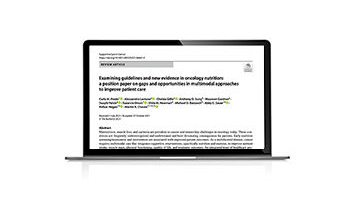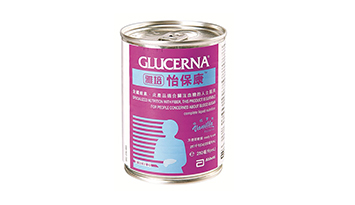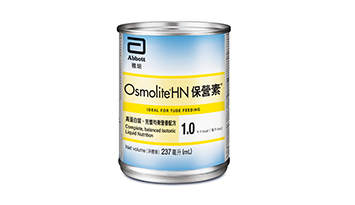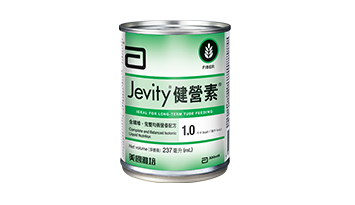Ensure® Plus Vanilla flavor 200mL
ENSURE PLUS
COMPLETE, BALANCED NUTRITION WITH HIGH ENERGY FORMULATION FOR MALNUTRITION
- High calories with 300kcal in each bottle (1.5kcal/ml)
- Reduce infection risk after surgical with 2 servings daily for 10 weeks continously1
IMPORTED FROM THE NETHERLANDS
Ingredients
Water, maltodextrin, hydrolized corn starch, sucrose, milk protein isolate, canola oil, CASEINATES (calcium caseinate, sodium caseinate), corn oil, MINERALS (sodium citrate, potassium citrate, magnesium chloride, potassium chloride, magnesium phosphate dibasic, calcium phosphate tribasic, potassium phosphate dibasic, ferrous sulfate, zinc sulfate, manganese sulfate, cupric sulfate, sodium molybdate, potassium iodide, chromium chloride, sodium selenate), soy protein isolate, flavoring, emulsifier (soy lecithin), stabilizer (cellulose), VITAMINS (choline chloride, ascorbic acid, dl-alpha tocopheryl acetate, niacinamide, calcium pantothenate, pyridoxine hydrochloride, thiamine hydrochloride, riboflavin, Vitamin A palmitate, beta carotene, folic acid, phylloquinone, biotin, Vitamin D3, cyanocobalamin), stabilizer (sodium carboxymethyl cellulose), stabilizer (gellan gum).
Contains milk and soy ingredients.
Nutrition Information
RELATED PRODUCTS
RELATED CONTENT
Examining guidelines and new evidence in oncology nutrition
Examining guidelines and new evidence in oncology nutrition
- Logo
-

- Main Image
-

- Tagname
- Article
- Logo link
- title
- Examining guidelines and new evidence in oncology nutrition: a position paper on gaps and opportunities in multimodal approaches to improve patient care
- Content Reference
- /content/an/hcpproconnect/hk/en/home/adult/resources/public/Examining-guidelines-and-new-evidence-in-oncology-nutrition-a-position-paper-on-gaps-and-opportunities-in-multimodal-approaches-to-improve-pati
- Abstract
-
Malnutrition, muscle loss, and cachexia are prevalent in cancer and remain key challenges in oncology today. These conditions are frequently underrecognised and undertreated and have devastating consequences for patients. Early nutrition screening/assessment and intervention are associated with improved patient outcomes.
- Publish Date:
- Oct 2021
The Benefits of Beta-Hydroxy-Beta-Methylbutyrate (or HMB)
- Logo
-

- Main Image
-

- Tagname
- ARTICLE
- Logo link
- title
- The Benefits of Beta-Hydroxy-Beta-Methylbutyrate (or HMB)
- Content Reference
- /content/an/hcpproconnect/hk/en/home/adult/resources/public/hmb-article
- Abstract
-
The benefits of oral nutritional supplements containing HMB are supported by evidence from over 18 clinical studies,9-27 read this short article to learn more about the benefits of HMB.
- Publish Date:
The Underappreciated Role of Low Muscle Mass in the Management of Malnutrition
The Underappreciated Role of Low Muscle Mass in the Management of Malnutrition
- Logo
-

- Main Image
-

- Tagname
- Article
- Logo link
- title
- The Underappreciated Role of Low Muscle Mass in the Management of Malnutrition
- Content Reference
- /content/an/hcpproconnect/hk/en/home/adult/resources/public/The-Underappreciated-Role-of-Low-Muscle-Mass-in-the-Management-of-Malnutrition
- Abstract
-
This opinion article, published in Journal of American Medical Directors Association (JAMDA), addresses the role of muscle mass in improving health outcomes in a variety of disease states. It also offers strategies you can use to help patients manage low muscle mass and prevent muscle loss.
- Publish Date:
- Jan 2019

The Importance of Muscle Strength for Patient Outcomes
Muscle strength is important for patients' quality of life. Muscle loss naturally decreases with age and can have devasating consequences. However, muscle loss can be reversed with early nutritional intervention.

strength for life - copd
COPD patients often experience reduced respiratory muscle endurance, which can impact disease trajectory. Early assessment and intervention is critical to improve patient outcomes

Gain to Lose! Can increased Muscle Mass decrease the fat in the body?
Traditional weight loss programs often focus on cutting body fat and hitting lower numbers on the scale but do not focus on gaining muscles.
References:
- Beattie AH et al. Gut 2000; 46: 813-818
HKG.2025.58198.AND.1








